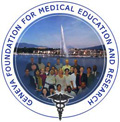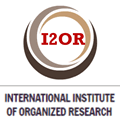Severe ocular trauma. A four years retrospective study
Keywords:
eye injuries, epidemiology, complications, score ocularAbstract
Introduction: eye trauma represents a challenge for doctors and is an important reason for hospitalization. Objective: to know the epidemiological clinical behavior of serious eye trauma. Method: an observational, descriptive, cross-sectional study in hospitalized patients with a diagnosis of severe eye trauma at the “Arnaldo Milián Castro” Hospital in the period between 2015 and 2018. Results: Young men between 18 and 24 years predominated(12.6%), open globe eye trauma (84.8%), penetrating lesions (70.9%), in eyes with open balloon trauma, zone 1 was the most affected (71. 9%) and in those with the closed balloon trauma, zone 2 (47.8%), 56.3% of traumas occurred in work settings (those occurred in regular environments were the most common -52.9% -), the lens damage was the most common complication in both types of eye trauma, posttraumatic endophthalmitis had an incidence of 7%, a gateway> 5mm, the rural environment and direct damage to the lens were the most frequent predisposing factors, the presence of two or more predisposing factors (77.8% of cases with post-traumatic endophthalmitis) and, according to the calculation of the Ocular Trauma Score, 39.8% of the patients were placed in category 3. Conclusions: severe eye trauma is an important cause of morbidity in young men and occurs very frequently in work environments and in rural environments. Damage to the lens represented the most frequent complication in both types of trauma. The presence of several predisposing factors increases the risk of posttraumatic endophthalmitis.Downloads
References
1. Güzel M, Erenler AK, Niyaz L, Baydın A. Management of traumatic eye injuries in the emergency department. OA Emergency Medicine [Internet]. 2014 Jan [citado 20 Feb 2019];2(1):2. Disponible en: http://www.oapublishinglondon.com/article/1308
2. Recchia FM, Sternberg JrP. Surgery for ocular trauma: principles and techniques of treatment. In: Ryan SJ, Hilton DR, Schachat AP. Retina. 5th ed. Los Angeles USA; 2013. p. 1852-1875.
3. Chang Hernández M, Velázquez Villares YC, Hernández Martínez R, Santana Alas ER, García Ferrer L. Trauma ocular a globo abierto asociado a cuerpo extraño intraocular vegetal. Rev Cubana Med Gen Integr [Internet]. 2018 Jun [citado 20 Feb 2019];34(2):1-10. Disponible en: http://scielo.sld.cu/scielo.php?script=sci_arttext&pid=S0864-21252018000200014&lng=es
4. Regalado RNC, Siong RLB, Agahan ALD, Felipe AF. Prognostic Value of the Ocular Trauma Score in Traumatic Open Globe Injuries in the Philippines: A Five-Year Retrospective Study —Prognostic Value of the Ocular Trauma Score in Open Globe Injuries. Open Access Library Journal [Internet]. 2018 [citado 20 Feb 2019];5:e4224. Disponible en: http://www.oalib.com/articles/5292025#.XeUed7idPGg. http://dx.doi.org/10.4236/oalib.1104224
5. Kuhn F, Morris R, Witherspoon CD, Mester V. The Birmingham Eye Trauma Terminology system (BETT). J Fr Ophtalmol [Internet]. 2004 [citado 20 Feb 2019];27:206-210. Disponible en: https://www.em-consulte.com/showarticlefile/112778/pdf_57893.pdf
6. Scott R. The Ocular Trauma Score. Community Eye Health [Internet]. 2015 [citado 20 Feb 2019];28(91):44-45. Disponible en: https://www.ncbi.nlm.nih.gov/pmc/articles/PMC4790158/
7. Diazgranados F J, Anaya D, Arias D, Pinto I, Solano A, Carvajal R. Trauma Ocular Abierto en el Hospital de San José. Visión Pan-American [Internet]. 2018 Jan-Mar [citado 20 Feb 2019];17(2):79-83. Disponible en: http://journals.sfu.ca/paao/index.php/journal/article/view/451
8. Guerra García RA, Rodríguez VR, Moreno Ramírez ME. Trauma ocular a globo abierto. En: Manual de diagnóstico y tratamiento en Oftalmología. 2da ed. La Habana: Editorial Ciencias Médicas; 2018. p. 449-454.
9. Razo-Blanco Hernández DM, Lima Gómez V. Comparación del Ocular Trauma Score en traumatismo con globo abierto, atendido temprana o tardíamente. Cir Cir [Internet]. 2015 [citado 20 Feb 2019];83(1):9-14. Disponible en: http://www.elsevier.es/es-revista-cirugia-cirujanos-139-pdf-S0009741115000201
10. Pandita A, Merriman M. Ocular trauma epidemiology: 10-year retrospective study. NZMJ [Internet]. 2012 Jan [citado 20 Feb 2019];125(1348):61-69. Disponible en: http://www.nzma.org.nz/journal/read-the-journal/all-issues/2010-2019/2012/vol-125-no-1348/article-pandita
11. Titiyal GS, Prakash CH, Gupta S, Joshi V. Pattern of Ocular Trauma in Tertiary Care Hospital of Kumaon Region, Uttarakhand. J Indian Acad Forensic Med [Internet]. 2013 Apr-Jun [citado 20 Feb 2019];35(2):116-119. Disponible en: http://medind.nic.in/jal/t13/i2/jalt13i2p116.pdf
12. Bauza AM, Emami P, Son JH, Langer P, Zarbin M, Bhagat N. Work-related open-globe injuries: demographics and clinical characteristics. Eur J Ophthalmol [Internet]. 2013 Mar-Apr [citado 20 Feb 2019];23(2):242-8. Disponible en: https://www.ncbi.nlm.nih.gov/pubmed/23112040
13. Unterlauft JD, Rehak M, Wiedemann P, Meier P. Firework-Related Eye Trauma in Germany. Curr Eye Res [Internet]. 2018 Dec [citado 20 Feb 2019];43(12):1522-1528. Disponible en: https://www.tandfonline.com/doi/abs/10.1080/02713683.2018.1508725?journalCode=icey20
14. Cruz Martínez J, Ríos Araujo BT, Díaz Pérez LD. Comportamiento clínico epidemiológico del trauma ocular grave según clasificación estandarizada, Cienfuegos, 2009-2011. Medisur [Internet]. 2012 Sep-Oct [citado 20 Feb 2019];10(5):346-354. Disponible en: http://scielo.sld.cu/scielo.php?script=sci_arttext&pid=S1727-897X2012000500003
15. Lin A, Confait C, Hoadley S, Ahmad M, Chen Ch. Severe Ocular Trauma in the Emergency Room. IOVS [Internet]. 2013 Jun [citado 20 Feb 2019];54(15):4434. Disponible en: https://iovs.arvojournals.org/article.aspx?articleid=2149296
16. Agrawal R, Ho SW, Teoh S. Pre-operative variables affecting final vision outcome with a critical review of ocular trauma classification for posterior open globe (zone III) injury. Indian J Ophthalmol [Internet]. 2013 Oct [citado 20 Feb 2019];61(10):541-5. Disponible en: https://www.ncbi.nlm.nih.gov/pmc/articles/PMC3853448/
17. Pérez García D, Eguía Martínez F, García Guerra A, Cruz Ordaz E. Utilidad del “Ocular Trauma Store” como herramienta de pronóstico visual en lesiones traumáticas oculares. Rev Cubana Oftalmol [Internet]. 2010 Jul-Dic [citado 20 Feb 2019];23(2):196-208. Disponible en: http://scielo.sld.cu/scielo.php?script=sci_arttext&pid=S0864-21762010000200003
18. Cadenhead HE, Eadie B, MD, Wendel C, Warner SJ. Sport-related ocular trauma in Vancouver, British Columbia: Not the usual suspects. BCMJ [Internet]. 2018 Jan-Feb [citado 20 Feb 2019];60(1):47-51. Disponible en: https://www.bcmj.org/sites/default/files/public/BCMJ_Vol60_No1_core-ocular-trauma.pdf
19. Agrawal R, Wei HS, Teoh S. Prognostic factors for open globe: injuries and correlation of Ocular Trauma Score at a tertiary referral eye care centre in Singapore. Indian J Ophthalmol [Internet]. 2013 Sep [citado 20 Feb 2019];61(9):502-506. Disponible en: https://www.ncbi.nlm.nih.gov/pubmed/24104709
20. Guven S, Durukan AH, Erduman C, Kucukevcilioglu M. Prognostic factors for open-globe injuries: variables for poor visual outcome. Eye [Internet]. 2018 Sep [citado 20 Feb 2019];33(3):392-397. Disponible en: https://www.nature.com/articles/s41433-018-0218-9
21. Duan F, Yuan Z, Liao J, Zheng Y, Yang Y, Lin X. Incidence and risk factors of intraocular foreign body-related endophthalmitis in Southern China. Hindawi Journal of Ophthalmology [Internet]. 2018 [citado 20 Feb 2019];2018:5. Disponible en: https://europepmc.org/backend/ptpmcrender.fcgi?accid=PMC6186324&blobtype=pdf
22. Murray DC. Implementing and applying the Ocular Trauma Score: the challenges. Community Eye Health [Internet]. 2015 [citado 20 Feb 2019];28(91):44-45. Disponible en: https://www.cehjournal.org/wp-content/uploads/the-ocular-trauma-score.pdf
Downloads
Published
How to Cite
Issue
Section
License
Authors who have publications with this journal agree to the following terms:
- Authors will retain their copyright and assign to the journal the right of first publication of their work, which will simultaneously be subject to a Creative Commons License / Attribution-Noncommercial 4.0 International (CC BY-NC 4.0) that allows third parties to share the work as long as its author and first publication in this journal are indicated.
- Authors may adopt other non-exclusive license agreements for distribution of the published version of the work (e.g., depositing it in an institutional repository or publishing it in a monographic volume) as long as the initial publication in this journal is indicated.
- Authors are allowed and encouraged to disseminate their work through the Internet (e.g., in institutional telematic archives or on their web page) before and during the submission process, which can produce interesting exchanges and increase citations of the published work. (See The effect of open access).





 december 15 2025
december 15 2025


